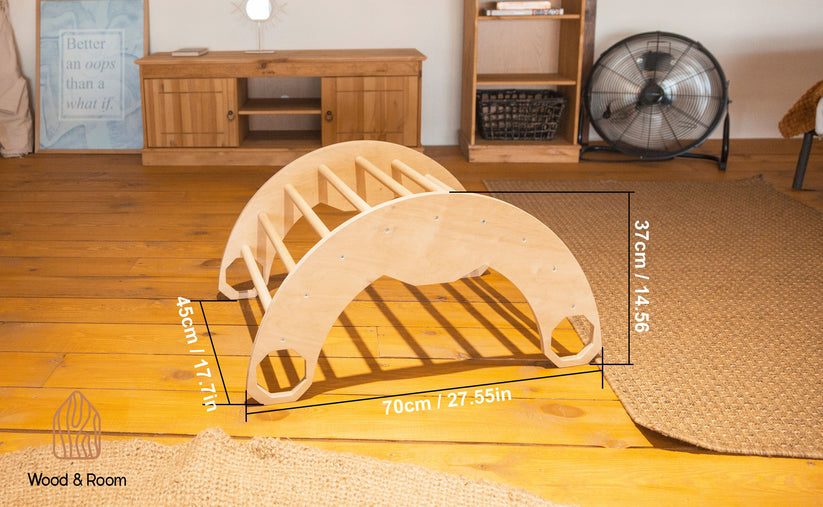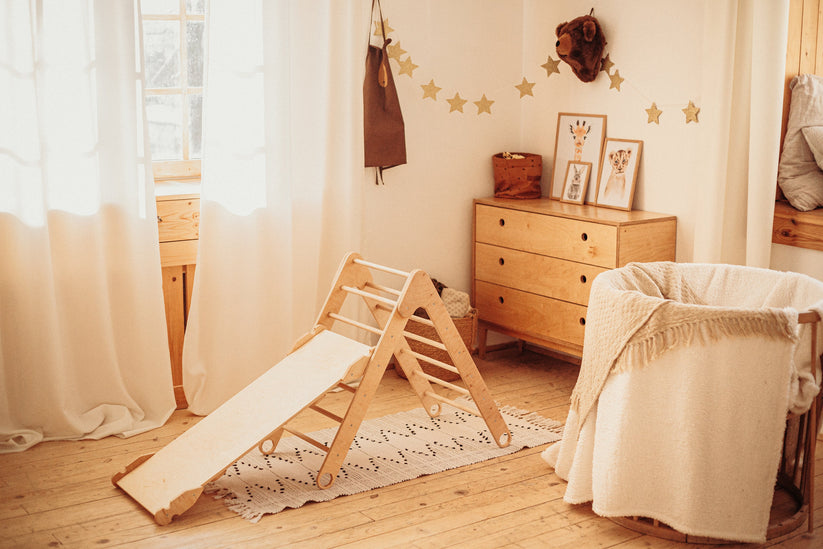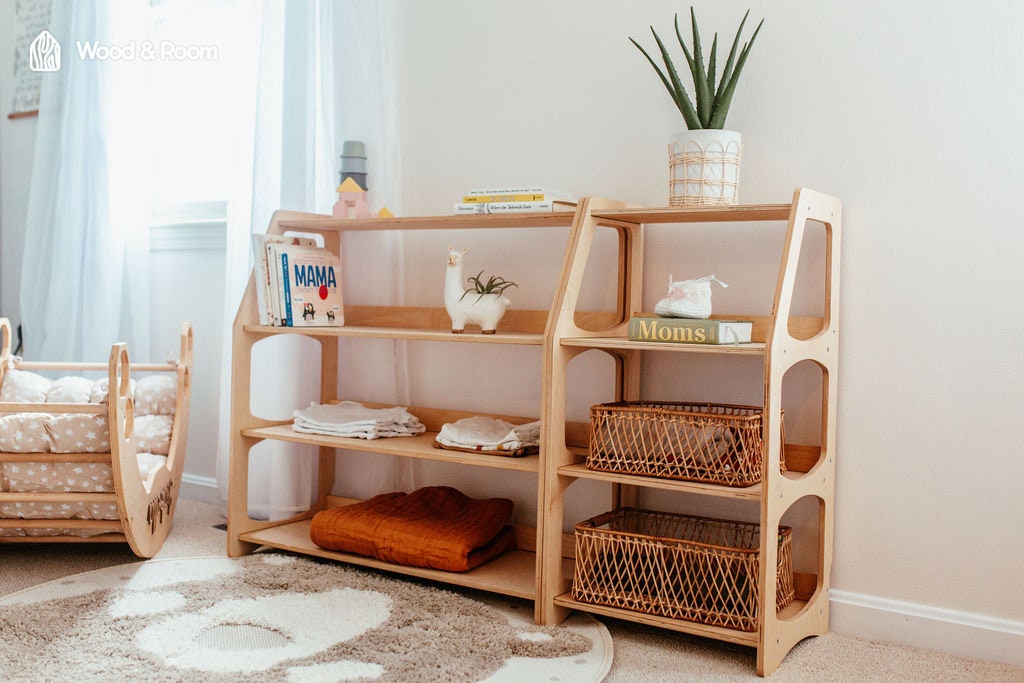If you're a parent you've probably heard the term "Montessori" thrown around when discussing educational and developmental approaches for children. But what exactly is Montessori, and how can you use it to create a nurturing environment for your little ones? In this article, we'll delve into the essence of progressive education, explore some essential tools like climbing arches, Pikler triangles, furniture, and shelves, and show you how to integrate these elements into your child's daily life.
Understanding Montessori
Montessori is an educational philosophy and approach developed by Dr. Maria Montessori in the early 20th century. It is based on the idea that children are naturally curious, capable of self-directed learning, and thrive in environments that foster independence and exploration. The educational method emphasizes hands-on learning, individualized instruction, and a child-centered approach.
What about Practice?
Now, let's talk about how you can incorporate Montessori principles into your child's life, starting with the use of tools and furniture.
1. Climbing Arch:
A climbing arch is a versatile and engaging piece of Montessori-inspired equipment. It encourages physical activity, balance, and coordination, all while promoting self-confidence and a sense of accomplishment. Children can climb, crawl, and explore, fostering both their gross and fine motor skills. Place a climbing arch in your child's play area or bedroom to provide them with a safe and stimulating environment for physical development.
2. Pikler Triangle:
The Pikler triangle is another excellent addition to a learning-inspired play space. Named after Hungarian pediatrician Dr. Emmi Pikler, this triangular climbing frame allows children to explore their physical abilities at their own pace. It encourages them to climb, balance, and develop their muscles while also fostering a sense of autonomy and confidence. It's a fantastic tool to promote active play and independence in your child's daily routine.
3. Montessori Furniture:
Montessori furniture is designed with the child in mind. It typically includes low, child-sized tables and chairs, allowing children to independently access their workspace. This fosters a sense of responsibility as they can set up their own activities and clean up after themselves. This furniture promotes a sense of ownership and control over their environment, which is essential for a child's development.
4. Montessori Shelf:
This special shelf is a key organizational element in an educational-inspired space. It provides a designated area for children to access and put away their materials independently. By having their toys, books, and learning materials within easy reach, children can choose their activities and engage with them without constantly needing adult assistance. This promotes decision-making skills and self-reliance.
Creating a Montessori Environment
To fully embrace the philosophy, it's crucial to create an environment that supports independence and self-directed learning. Here are some tips to get you started:
- Simplify the Space: Remove clutter and provide open, unobstructed areas for exploration and play.
- Child-Centered Decor: Consider your child's interests and incorporate decorations that reflect their preferences, allowing them to feel a sense of ownership over their space.
- Rotating Activities: Offer a variety of age-appropriate activities and rotate them regularly to keep your child engaged and curious.
- Encourage Independence: Teach your child practical life skills like dressing themselves, pouring drinks, or setting the table, allowing them to contribute to daily routines.
- Respect Their Choices: Allow your child to choose their activities and play independently. Avoid imposing your preferences on them.
Montessori Benefits Beyond Childhood
Montessori principles extend far beyond the early years of childhood. They lay a foundation for lifelong skills and attitudes. Children who have experienced alternative education tend to become independent thinkers, problem solvers, and self-motivated learners. These skills are not only valuable during childhood but continue to serve them well throughout their academic and professional lives. Montessori graduates often display strong leadership qualities, adaptability, and a love for exploring new ideas. By embracing experiential learning at an early age, you're not only nurturing your child's development today but also setting them on a path for a future filled with success and a lifelong love for learning.
Bottom Line
In conclusion, Montessori is more than just an educational philosophy; it's a way of life that fosters independence, self-confidence, and a love for learning. By incorporating Montessori-inspired tools like climbing arches, Pikler triangles, furniture, and shelves into your child's daily routine, you can create an environment that encourages exploration, creativity, and self-discovery. Remember, the key is to provide opportunities for your child to learn and grow at their own pace while offering support and guidance when needed. Embrace the experiential learning, and you'll be setting your child on a path to lifelong learning and success.



